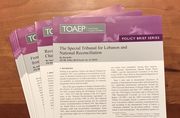Element:
The Kvočka Trial Chamber summarised the relevant case law:
"Rape was succinctly defined in the Akayesu Trial Chamber Judgement as 'a physical invasion of a sexual nature, committed on a person under circumstances which are coercive.' The Furundzija Trial Chamber articulated the objective elements of rape as follows:
(i) the sexual penetration, however slight:
(a) of the vagina or anus of the victim by the penis of the perpetrator or any other object used by the perpetrator; or
(b) of the mouth of the victim by the penis of the perpetrator;
(ii) by coercion or force or threat of force against the victim or a third person."
"The Kunarac Trial Chamber, however, found element (ii) of the Furundzija element more restrictive than required by international law, and concluded that it should be interpreted to mean 'where such sexual penetration occurs without the consent of the victim.' The Kunarac Judgement emphasizes that the consent must be 'given voluntarily, as a result of the victim's free will, assessed in the context of the surrounding circumstances' and the principal focus should be whether there were serious violations of sexual autonomy."
"The Trial Chamber agrees with the factors set out by the Trial Chamber in Kunarac, defining rape as a violation of sexual autonomy. In order for sexual activity to be classified as rape:
(i) the sexual activity must be accompanied by force or threat of force to the victim or a third party;
(ii) the sexual activity must be accompanied by force or a variety of other specified circumstances which made the victim particularly vulnerable or negated her ability to make an informed refusal; or
(iii) the sexual activity must occur without the consent of the victim."
"In considering allegations of rape, the Celebici Trial Chamber stressed that coercive conditions are inherent in situations of armed conflict. Further, the Furundzija Trial Chamber emphasized that 'any form of captivity vitiates consent.' This Trial Chamber endorses these holdings."
"The mens rea of the crime of rape is the intent to effect a sexual penetration and the knowledge that it occurs without the consent of the victim."
"The Akayesu Trial Chamber defined sexual violence as 'any act of a sexual nature which is committed on a person under circumstances which are coercive.' Thus, sexual violence is broader than rape and includes such crimes as sexual slavery or molestation. Moreover, the Akayesu Trial Chamber emphasized that sexual violence need not necessarily involve physical contact and cited forced public nudity as an example."[1]
The Kvocka Appeals Chamber stated that:
"[t]he Appellant's bald assertion that nothing short of continuous resistance provides adequate notice to the perpetrator that his attentions are unwanted is wrong on the law and absurd on the facts"[20]. While force provides clear evidence that the act was non-consensual, "force is not an element per se of rape"."[2]
The Appeals Chamber in Kunarac found that:
"While it is true that a focus on one aspect gives a different shading to the offence, it is worth observing that the circumstances giving rise to the instant appeal and that prevail in most cases charged as either war crimes or crimes against humanity will be almost universally coercive. That is to say, true consent will not be possible."[3]
"Turning now to the issue of D.B.'s consent, the Trial Chamber found that, given the circumstances of D.B.'s captivity in Partizan, regardless of whether he knew of the threats by Gaga, the Appellant could not have assumed that D.B. was consenting to sexual intercourse. [...] Although caution must be exercised when drawing inferences, after having carefully reflected and balanced the details and arguments of the parties, the Appeals Chamber considers these inferences reasonable."[4]
"As to the alleged relationship between the Appellant and FWS-87, the Appeals Chamber refers to the convincing and exhaustive findings in the Trial Judgement that it 'was not one of love as the Defence suggested, but rather one of cruel opportunism on Kovac's part, of constant abuses and domination over a girl who, at the relevant time, was only about 15 years old'"[5]
The Kunarac Trial Chamber set out the required mental element as:
"the intention to effect [...] sexual penetration, and the knowledge that it occurs without the consent of the victim."[6]
"[...] the Trial Chamber regards it as highly improbable that the accused Kunarac could realistically have been 'confused' by the behaviour of the victim."[7]
"Dragoljub Kunarac had sexual intercourse with D.B. in the full knowledge that she did not freely consent."[8]
Relationship with elements of other offences
The Kunarac Trial Chamber held that:
"Consistently with its understanding of the definition of rape in international law, the Trial Chamber does not interpret the reference to consent as a 'defence' as a reference to a defence in its technical sense. It understands the reference to consent as a 'defence' in Rule 96 as an indication of the understanding of the judges who adopted the rule of those matters which would be considered to negate any apparent consent. It is consistent with the jurisprudence considered above and with a common sense understanding of the meaning of genuine consent that where the victim is "subjected to or threatened with or has reason to fear violence, duress, detention or psychological oppression" or 'reasonably believed that if [he or she] did not submit, another might be so subjected, threatened or put in fear', any apparent consent which might be expressed by the victim is not freely given and the second limb of the Trial Chamber's definition would be satisfied. The factors referred to in Rule 96 are also obviously not the only factors which may negate consent. However, the reference to them in the Rule serves to reinforce the requirement that consent will be considered to be absent in those circumstances unless freely given."[9]
"The Trial Chamber regards it as highly improbable that the accused Kunarac could realistically have been 'confused' by the behaviour of D.B., given the general context of the existing war-time situation and the specifically delicate situation of the Muslim girls detained in Partizan or elsewhere in the Foca region during that time."[10]
Rape as an Independent War Crime
The Kunarac Appeal Chamber concluded that:
"rape [...] constitutes a recognised war crime under customary international law, which is punishable under Article 3 of the Statute."[11]
Rape as Torture
The Semanza Trial Chamber found that:
"[...] rape was committed on the basis of discrimination, targeting Victim A because she was a Tutsi woman. The Chamber recalls that severe suffering inflicted for the purposes of discrimination constitutes torture and, therefore, finds that the principal perpetrator tortured Victim A by raping her for a discriminatory purpose."[12]
The Kunarac Appeals Chamber explained that:
"[...] a question of cumulativeness assumes the validity of each conviction standing independently; it asks only whether both convictions may be made where they relate to the same conduct. [...] Without being exhaustive and as already noted, an element of the crime of rape is penetration, whereas an element for the crime of torture is a prohibited purpose, neither element being found in the other crime. From this, it follows that cumulative convictions for rape and torture under Article 3 [equivalent to article 8 (2)(c)] of the Statute are permissible though based on the same conduct."[13]
The Trial Chamber in Mucic et al. (Čelebići) held that:
"In order for rape to be included within the offence of torture it must meet each of the elements of this offence [...]."[14]
"The Trial Chamber considers the rape of any person to be a despicable act which strikes at the very core of human dignity and physical integrity. The condemnation and punishment of rape becomes all the more urgent where it is committed by, or at the instigation of, a public official, or with the consent or acquiescence of such an official. Rape causes severe pain and suffering, both physical and psychological. The psychological suffering of persons upon whom rape is inflicted may be exacerbated by social and cultural conditions and can be particularly acute and long lasting."[15]
In Kunarac, the Trial Chamber stated that:
"[...] rape is one of the worst sufferings a human being can inflict upon another."[16]
In relation to the accused Radić, the Kvočka Trial Chamber held that the:
"[...] threat of rape or other forms of sexual violence undoubtedly caused severe pain and suffering [...] and thus the elements of torture are satisfied."[17]
The Furundžija Trial Chamber found that:
"International case law,185 and the reports of the United Nations Special Rapporteur186 evince a momentum towards addressing, through legal process, the use of rape in the course of detention and interrogation as a means of torture and, therefore, as a violation of international law. Rape is resorted to either by the interrogator himself or by other persons associated with the interrogation of a detainee, as a means of punishing, intimidating, coercing or humiliating the victim, or obtaining information, or a confession, from the victim or a third person. In human rights law, in such situations the rape may amount to torture, [...]."[18]
The Semanza Trial Chamber found that:
"[...] the rape [of Victim A] was committed on the basis of discrimination, targeting Victim A because she was a Tutsi woman. The Chamber recalls that severe suffering inflicted for the purposes of discrimination constitutes torture and, therefore, finds that the principal perpetrator tortured Victim A by raping her for a discriminatory purpose."[19]
The Akayesu Trial Chamber states that:
"[...] rape is a form of aggression and... the central elements of the crime of rape cannot be captured in a mechanical description of objects and body parts. The Convention against Torture and Other Cruel, Inhuman and Degrading Treatment or Punishment does not catalogue specific acts in its definition of torture, focussing rather on the conceptual frame work of state sanctioned violence. This approach is more useful in international law. Like torture rape is used for such purposes as intimidation, degradation, humiliation, discrimination, punishment, control or destruction of a person. Like torture rape is a violation of personal dignity, and rape in fact constitutes torture when inflicted by or at the instigation of or with the consent or acquiescence of a public official or other person acting in an official capacity."[20]
The Kunarac Trial Chamber held that:
"The three soldiers then took [Witness 183's] to the banks of the Cehotina river in Foča near Veleževo, where the accused tried to obtain information or a confession from FWS-183 concerning her alleged sending of messages to the Muslim forces and information about the whereabouts of her valuables while he threatened to kill her and her son. By his attempt to intimidate her, Dragoljub Kunarac also showed his hatred for Muslims, his intention to intimidate her and his intention to discriminate against Muslims in general, and FWS-183 in particular. All three soldiers raped [her]. [...] Subsequently she was raped vaginally and orally by the soldiers. The rapes resulted in severe mental and physical pain for FWS-183. [...] For these acts, the Trial Chamber finds the accused Dragoljub Kunerac GUILTY of torture under Count 11."[21]
Footnotes:
[1] ICTY, Kvočka et al. Trial Judgment 2 November 2001, para. 175-181.
[2] ICTY, Kvočka et al. Appeal Judgment 28 February 2005, para. 129.
[3] ICTY, Kunarac et al. Appeal Judgment 12 June 2002, para. 130.
[4] ICTY, Kunarac et al. Appeal Judgment 12 June 2002, para. 218.
[5] ICTY, Kunarac et al. Appeal Judgment 12 June 2002, para. 280.
[6] ICTY, Kunarac et al. Trial Judgment 22 February 2001, para. 460. See also ICTY, Kunarac et al. Appeal Judgment 12 June 2002, para. 127.
[7] ICTY, Kunarac et al. Trial Judgment 22 February 2001, para. 646.
[8] ICTY, Kunarac et al. Trial Judgment 22 February 2001, para. 647.
[9] ICTY, Kunarac et al. Trial Judgment 22 February 2001, para. 464.
[10] ICTY, Kunarac et al. Trial Judgment 22 February 2001, para. 646.
[11] ICTY, Kunarac et al. Appeal Judgment 12 June 2002, para. 195.
[12] ICTR, Semanza Trial Judgement 15 May 2003, para. 483.
[13] ICTY, Kunarac et al. Appeals Judgment 12 June 2002, para. 196.
[14] ICTY, Mucic et al. (Čelebići) Trial Judgment 9 October 2001, para. 480.
[15] ICTY, Mucic et al. (Čelebići) Trial Judgment 9 October 2001, para. 495.
[16] ICTY, Kunarac et al. Trial Judgment 22 February 2001, para. 655.
[17] ICTY, Kvočka et al. Trial Judgment 2 November 2001, para. 561.
[18] ICTY, Furundžija Trial Judgement 10 October 1998, para.
[19] ICTR, Semanza Trial Judgement 15 May 2003, para. 545.
[20] ICTR, Akayesu Trial Judgment 2 September 1998, para. 597.
[21] ICTY, Kunarac et al. Trial Judgment 22 February 2001, paras. 711-715.







